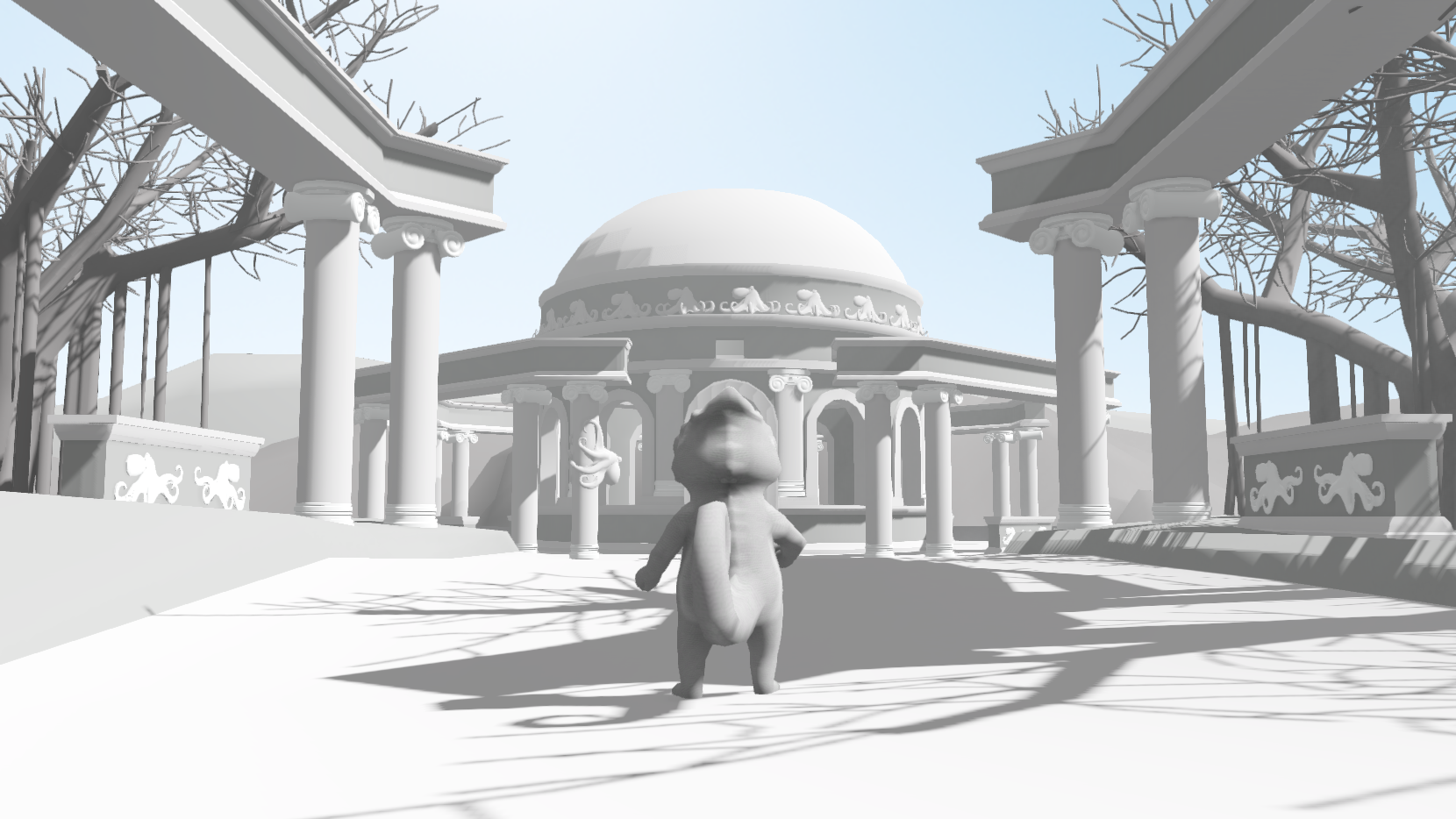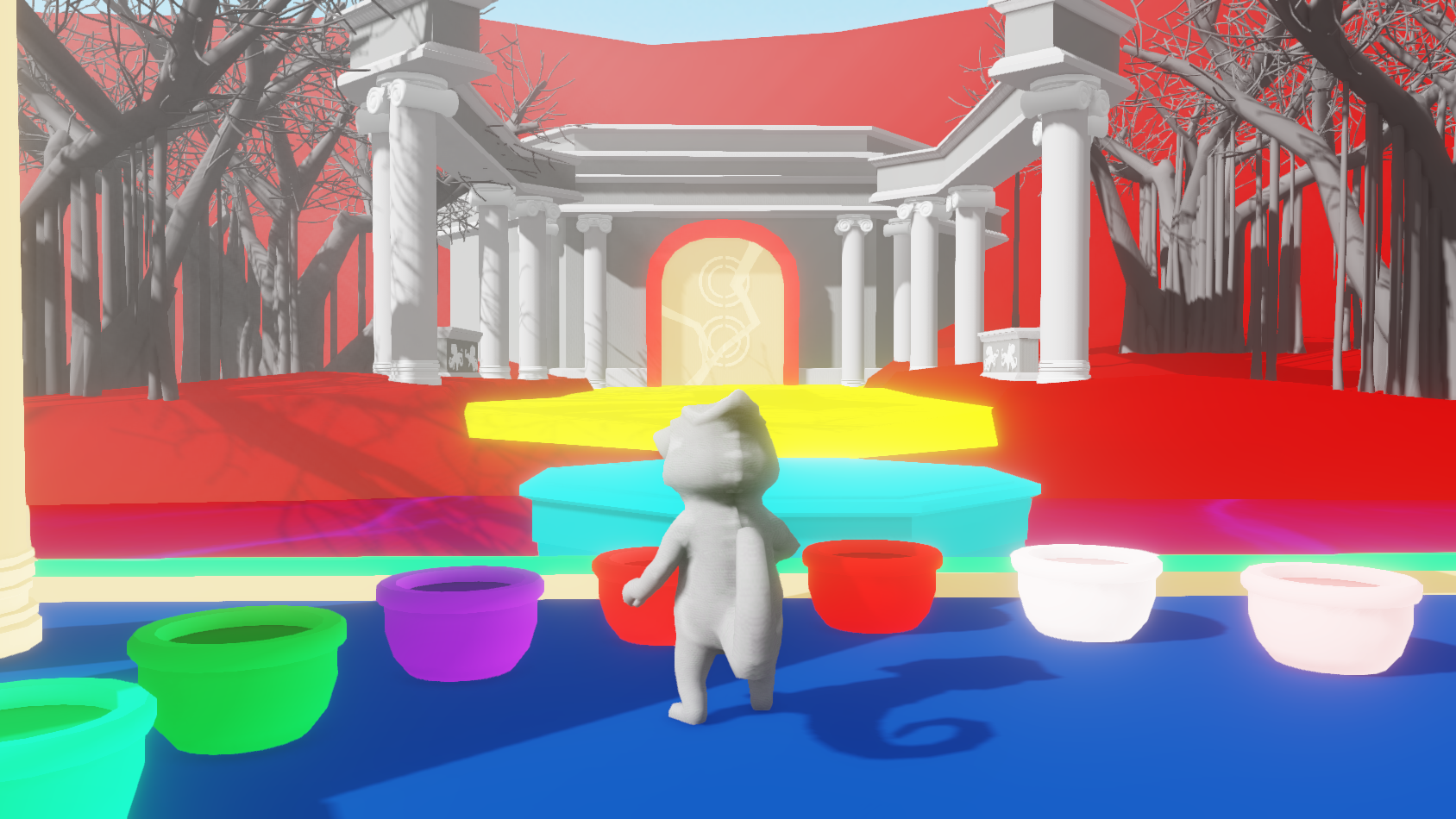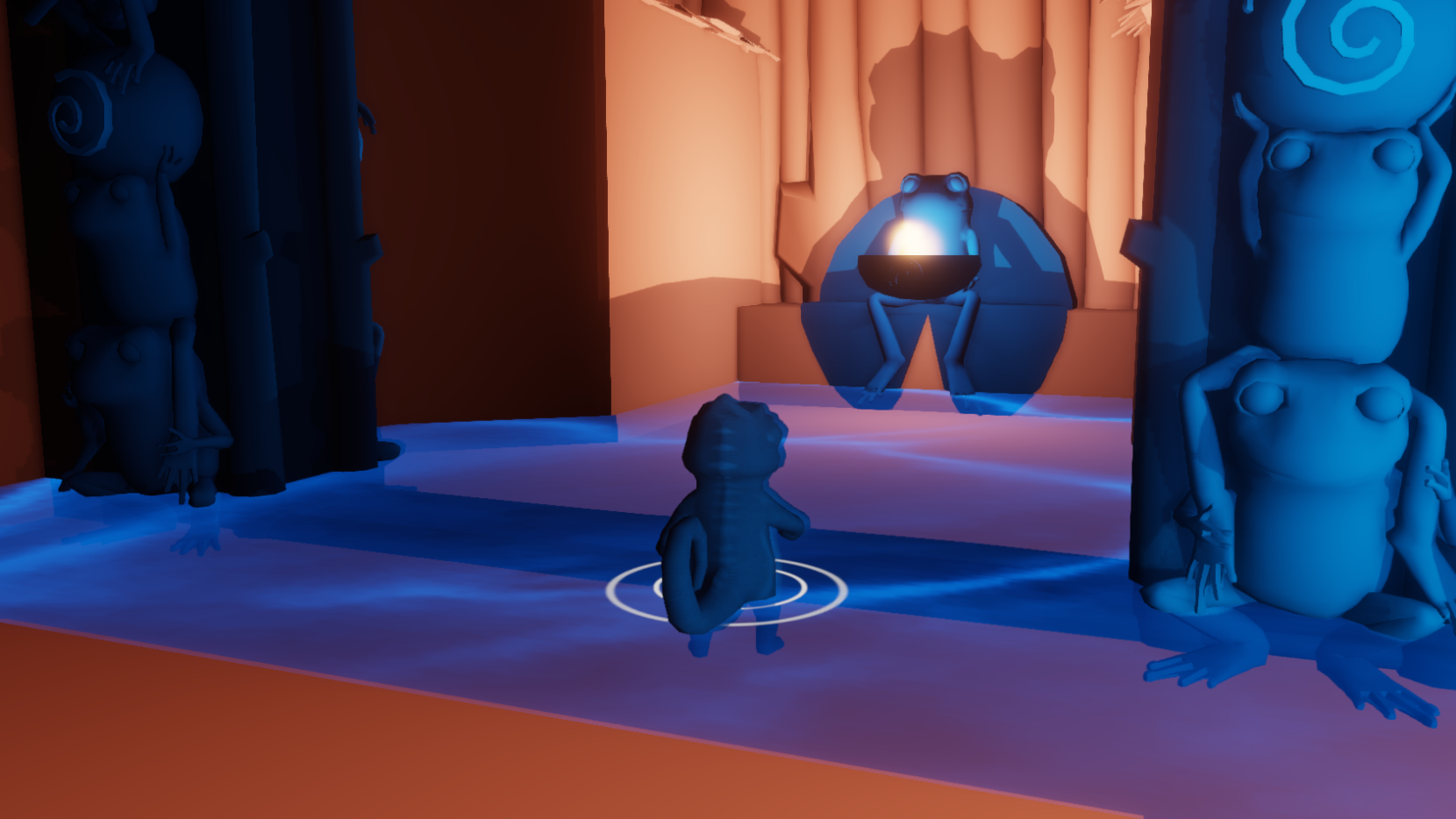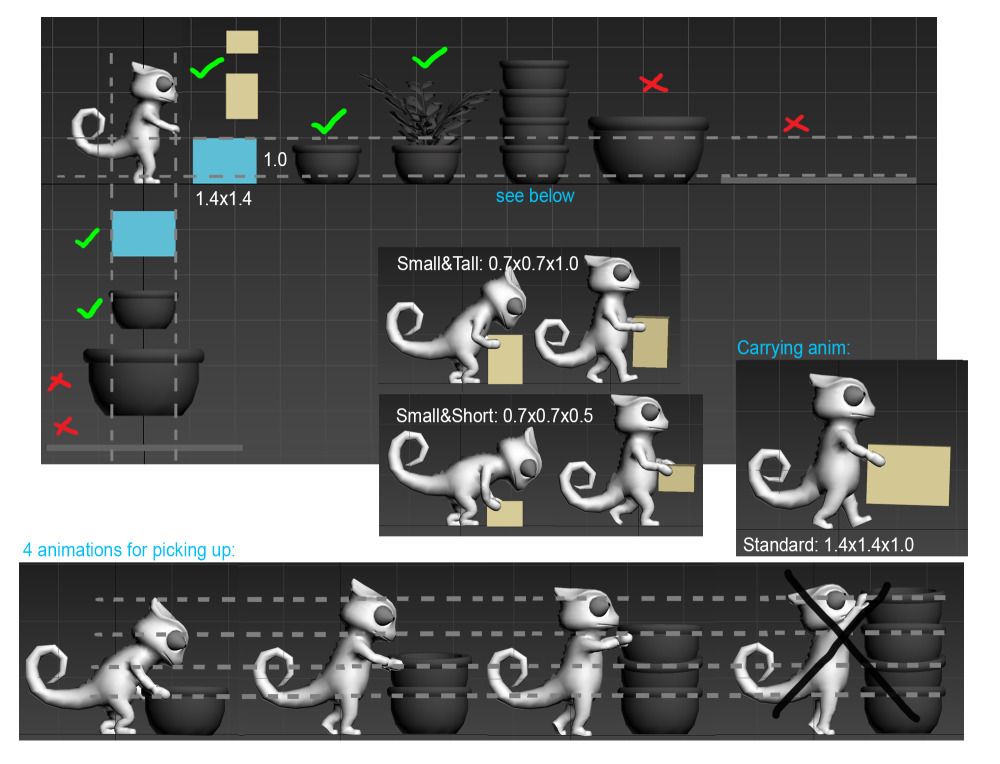Trouble Impact’s Color Thief is a puzzle game where you, a chameleon, solve puzzles through absorbing, expelling and manipulating color throughout the environment. Among a host of other awards, Color Thief recently won the MomoCon 2016 Indie Awards Showcase. Cat Musgrove, Co-Founder of Trouble Impact, took some time to chat with us about Color Thief‘s creation and development process.
The Interview
GameSkinny: What games, art and experiences influenced Color Thief?
Cat Musgrove: I’ve always really liked it when games have a strong sense of atmosphere, and from the beginning of Color Thief, I liked the idea of exploring a place and trying to reconstruct what happened there. I think Shadow of the Colossus and Ocarina of Time are games that are really good at creating that sense of mystery and place. In fact, when I think back on playing Ocarina, I remember it more as a series of places I visited, as opposed to thinking about characters or boss battles. I also really admire puzzle games that focus on a particular idea and delve into it as deeply as possible, like Braid or Portal – so that was something that we tried to do with Color Thief. There’s no repetition in the puzzles – each puzzle is a unique application of the idea of “color as energy.”
In terms of art, we knew early on that we wanted the game to happen in a series of temples, but it felt like we should stay away from typical Mayan or Japanese influences for architecture, so I researched different color-changing animals and where they’re located geographically, and then tried to pick different cultures from there. For the chameleon temple, I decided to use Sri Lankan architecture as a jumping off point – in particular, the ruins of Polonnaruwa. This ancient city happened to have a lot of Buddhist statues, so for fun I made a “Buddha Chameleon” in one of the rooms – and the whole idea for the narrative of the game sprung from that statue. (Not that you’re the Buddha – I liked the idea that anyone could achieve enlightenment through self reflection – so I connected that with the idea of color — and the rest of the story shall remain a mystery for now!)
In real life, Issam and I went on a trip to China back in 2008, and one of the places we visited was the Summer Palace, which is this beautiful sort of rambling estate. The buildings are far from being ‘ruins’ but there is that sense of discovery and mystery as you wander around and happen across a building you weren’t expecting, or connecting stairways going up the side of the hill. I think that sense has informed some of the design of the game as well.
GS: In Color Thief’s press kit, it mentioned, “As players that often feel outside of gaming’s target demographic, we are attempting to create a deep gameplay experience that doesn’t rely heavily on typical gaming fare such as numerical rewards and combat.” What experiences/sensations do you hope to evoke in people who pick up your game?
CM: I’d really like players to feel a lot of that sense of mystery that I mentioned above, but the game is primarily about solving puzzles, so I’d really like them to get a sense creativity and epiphany when solving puzzles. I try really hard to make all of the puzzles logical and a bit unconventional – so I hope that they’re left with a sort of playful sense of, “Oh, this is how this world works.” I want players to feel excited about the possibilities of exploring this idea.
GS: With the recent coloring book craze as a method of relaxation, I’m sure coloring book mode will be a hit. How did the idea to add this mode come about, and what kind of response have you gotten thus far?
CM: I think we’d mentioned the idea of an “unlimited color” mode a couple of times, but when we were showing the game at PAX South someone approached us about making a digital coloring book (with still images) and it suddenly clicked for us that we could structure it like a coloring book and it would work really well. We haven’t had the opportunity to show it to a lot of players yet, but the few that have played it seemed to enjoy it.
GS: If you could go back to the beginning knowing what you know now, what piece of advice would you give yourself?
CM: I really didn’t know how to design puzzles at all when I started, so a lot of the first couple of years of development could have been streamlined if I knew what I know now about that process. I also think our development blog is really good (we update every week, and try to be as open as possible about development), but I wish we’d posted it somewhere more people could find it like Tumblr or github instead of just our website.
GS: Can you share a memorable success and a memorable disappointment during the development process?
CM: I think every time we show our game, we have at least a couple of really great, memorable experiences with people who really connect with the game. At Indy PopCon, we had a couple of girls that were just so into the game. Every time I think of it, it makes me really happy. It’s easy to get tunnel-visioned when you’re working on something for so long – conventions are a great morale boost – and a reminder that we’re actually making something that other people are going to interact with. At another showing, there were 2 little boys that each separately played through the demo 3 times. At another event, someone actually tried to hand me money because he was psyched about the game and wanted to help us make it!
In terms of disappointments, I’ve designed a lot of puzzles that ended up not working out. Sometimes it’s almost funny how off-base I am when I design something on paper and think it would make a good puzzle. That’s all part of the process though, so I don’t think any of those failures have hit me too deeply. We are thinking we’re going to have to cut one of the temples from the game due to time and budget constraints, and that’s a pretty big disappointment for me. Did you know that there’s a color-changing spider called the Goldenrod Crab Spider? I really wanted to base a temple around it.
GS: What are some of the advantages and challenges of being a two-person team? How does this experience differ from your time at Activision?
CM: Issam and I are really fortunate in that our skillsets complement each other well. I like doing the art, game design, and community engagement (blog posts, tweets) – and Issam enjoys focusing on programming and running the business. It’s nice being a small, tight-knit team – it makes it a lot easier to make sure that we’re on the same page about what we’re making and what needs to be done (although we’re still not perfect and occasionally have
Being on a 2 person team is radically different than working for a huge company. In most ways it’s great and I love it – we get to decide what we want to make, and we don’t have to compromise. I get to design a game for myself, without worrying too much about whether or not it’s conforming to the expectations that certain demographics have that I might not share. At the same time, it does mean that we’re 100% responsible for our own success or failure, and we have to learn how to do things that we don’t know how to do (marketing), or maybe don’t want to do (taxes — actually, Issam really likes doing taxes for some reason?)
GS: What advice do you have for those hoping to make their own game?
CM: Oh this one is really simple: making a game is hard, and it will always take longer than you think, so make something you really care about. It takes a ton of willpower and energy to really follow through and finish something, so make sure it’s something that you can really stand behind. Whether you’re going to spend 3 months or 5 years on it, make sure you’re making something that you think makes the world a little better in some small way.
GS: What’s next for Color Thief and Trouble Impact Studio?
CM: Well, we’d really like to finish the game! We’re planning on releasing it in the middle of next year, although we’re going to need a little bit of funding help before then, so we might get slowed down by spending some time on contracting or finding a publisher – or maybe even doing a Kickstarter. Right now I’m working on the Frog Temple, which is the 2nd temple, and I’ve got some puzzles started for the Octopus Temple. For Trouble Impact, it’s hard to say! I think it mostly depends on whether or not we’re successful with this game, so please support us if you can!
For more information and updates, be sure to check out Color Thief’s website, Twitter and Facebook pages.










Published: Jul 8, 2016 10:52 am